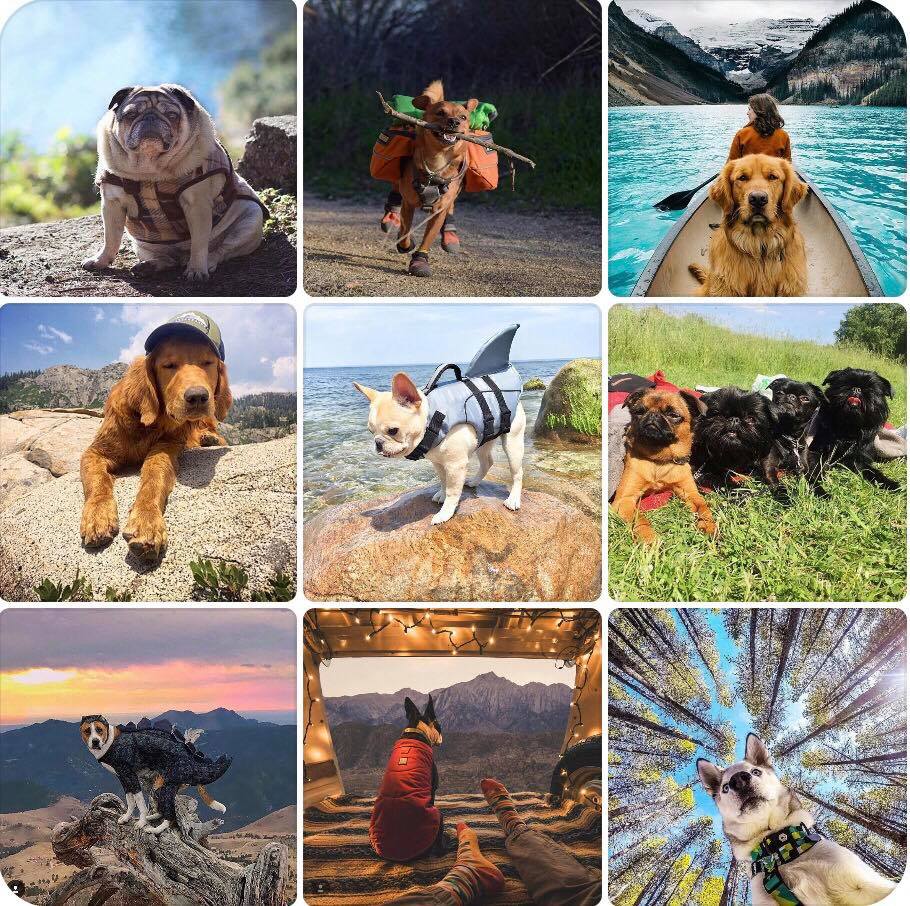1. Dog Health – Make sure your dog’s vaccinations are up-to- date before you hit the trail. It’s always a good idea to have your veterinarian give your dog a check-up to ensure he/she is in good health. If your dog is not used to long treks, build endurance with shorter hikes before attempting longer, more difficult ones.
2. Find the Right Trail – Make sure your hike is in a park or open space that allows dogs. National and regional parks are typically more dog-friendly than state parks. Do your research and familiarize yourself with any restrictions such as which areas of the parks allow dogs, and whether they have to be leashed at all times.
3. Manners – A well-mannered dog can be a great trail mate, so it’s best if your dog is well trained on the leash before you bring him/her on a long hike. Many experienced hikers advise never taking your dog off-leash even if it’s allowed, because too many things can go wrong. Even the best-trained dogs can ignore voice commands and bound after a squirrel through bushes or shrubs, which can be dangerous to the dog and damaging to sensitive off-trail habitats.
4. Wildlife – Always be aware what kind of wildlife is present, particularly if your dog is smaller.
5. Dog Backpacks – Packs are a great way for dogs to burn extra energy during a hike and give them a sense of purpose. My dog seems to hold his head a little higher when wearing his pack. Make sure you obtain the right size — if the doggy backpack is too small or too large, it can cause discomfort and even injury. Get your dog used to it by letting him wear the empty pack on short walks in the neighbourhood.
6. First Aid – Even for short hikes, it’s a good idea to bring basic first aid supplies like gauze pads, bandage tape, topical disinfectant, tweezers (for ticks and porcupine quills). Keep your vet or emergency vet’s phone number on speed dial.
7. Hydration – Dogs get dehydrated much faster than humans do, so bring plenty of water and a collapsible bowl. Many hikers let their dogs drink out of creeks and lakes, but they risk ingesting the giardia parasite, which settles in the small intestine and can wreak havoc on your dog’s system. If you allow your dog to drink from a creek, purify the water first.
8. Elevation – If the trail will take you to higher elevations, ascend at a slow and steady pace and make sure both of you drink plenty of water. Watch your dog closely for signs of altitude sickness. If he/she is panting heavily or slowing down, consider heading back down the trail or at least giving him/her a long rest. Dogs want to please their owners and will try to tough it out, so it’s up to us to make sure they are not overdoing it.
9. Poop Bags – Bring them. Use them. Pack them out.
10. After the Hike – Thoroughly check your dog for cuts or injuries as well as ticks, which can carry Lyme disease. Dogs burn energy faster than humans, so you keep kibble handy so your happy, trail-weary dog can have a little nosh before you head home.
Photo creds (Instagram handles); @insitu , @aspenthemountainpup , @thegoldenaspen , @jameson.thefrienchie , @petitbacon , @henrythecoloradodog , @mena_shootz , @im_gonna_be_frank , @robinventures

